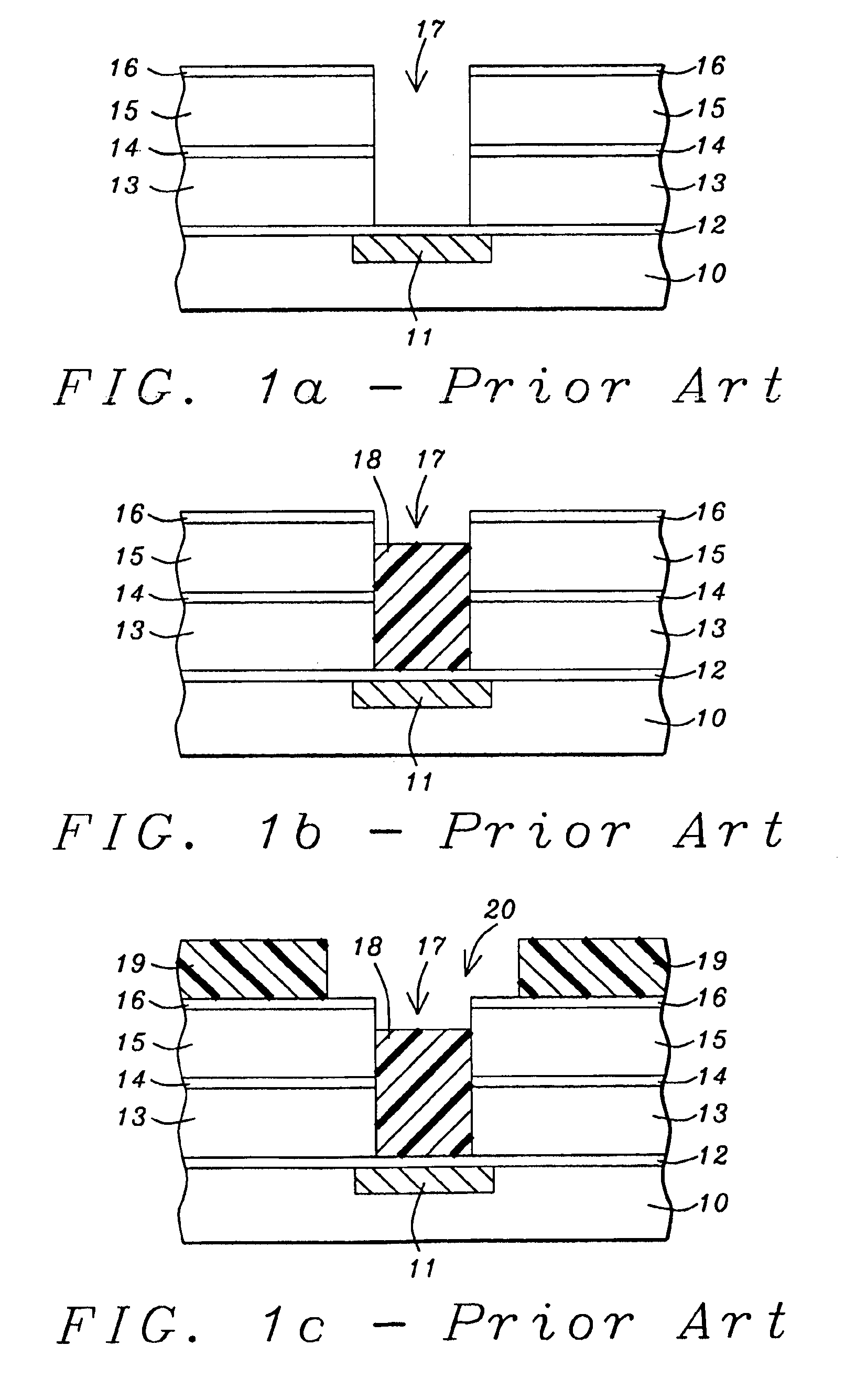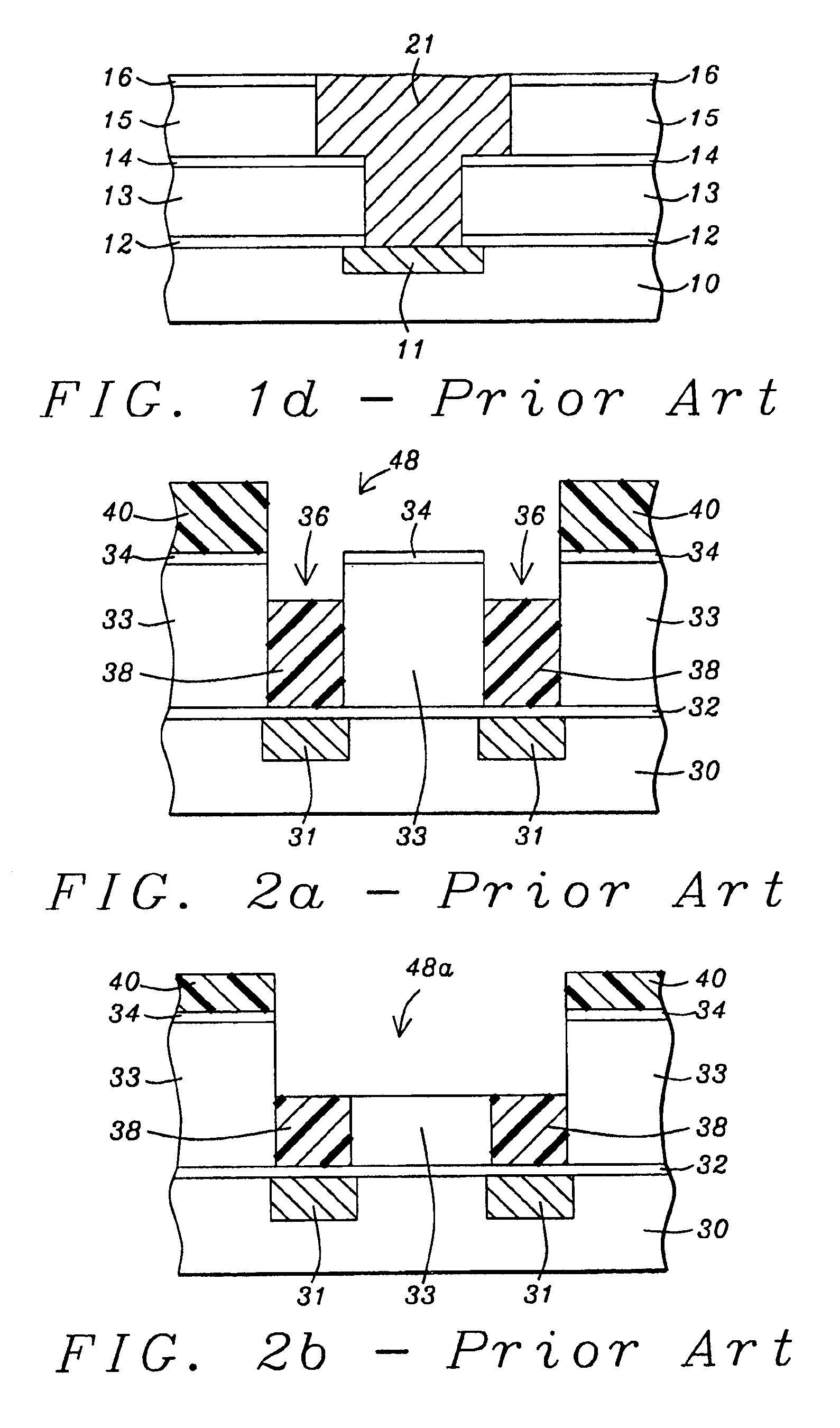Photoresist scum free process for via first dual damascene process
a damascene and photoresist technology, applied in the direction of photomechanical treatment, instruments, electrical equipment, etc., can solve the problems of high cost, ineffective thin photoresist film, and complicated lithographic process, and achieve the effect of low cos
- Summary
- Abstract
- Description
- Claims
- Application Information
AI Technical Summary
Benefits of technology
Problems solved by technology
Method used
Image
Examples
first embodiment
The present invention is particularly useful for photoresist patterning to form a trench in a via first dual damascene process and etch transferring the pattern into an underlying dielectric layer. The first embodiment is illustrated in FIGS. 6a-6f. Referring to FIG. 6a, a substrate 60 containing a conductive layer 61 is provided. Conductive layer 61 is normally connected to underlying wiring through a contact hole which is not shown here in order to simplify the drawing. Conductive layer 61 is adjacent to insulating material which is also not shown but separates the conductive material from nearby wiring in the horizontal direction. A barrier layer 62 comprised of silicon nitride is deposited by a chemical vapor deposition (CVD) technique on conductive material 61. The thickness of barrier layer 62 is normally in the range of about 200 to about 600 Angstroms. Next a dielectric layer 63 typically comprised of SiO2 or a low k dielectric material such as fluorosilicate glass, porous S...
second embodiment
the present invention is set forth in FIGS. 7a-7e. The design in which one damascene structure has two via holes and one trench aligned over one conductive layer while an adjacent damascene structure has only one via hole and one trench aligned over a conductive layer could also apply to the first embodiment. In the second embodiment, the width of the drawing has been expanded in order to show two damascene structures rather than just one as in FIGS. 6a-6f. The drawings are intended as examples and not as limiting the scope of the invention.
Referring to FIG. 7a, a substrate 80 containing conductive layers 81a and 81b is provided. Conductive layers 81a and 81b are comprised of a metal such as copper or aluminum or a metal silicide and are normally connected to underlying wiring through a contact hole which is not shown here in order to simplify the drawing. Conductive layers 81a and 81b are separated by insulating material which is also not shown in substrate 80. A barrier layer 82 c...
PUM
 Login to View More
Login to View More Abstract
Description
Claims
Application Information
 Login to View More
Login to View More - R&D
- Intellectual Property
- Life Sciences
- Materials
- Tech Scout
- Unparalleled Data Quality
- Higher Quality Content
- 60% Fewer Hallucinations
Browse by: Latest US Patents, China's latest patents, Technical Efficacy Thesaurus, Application Domain, Technology Topic, Popular Technical Reports.
© 2025 PatSnap. All rights reserved.Legal|Privacy policy|Modern Slavery Act Transparency Statement|Sitemap|About US| Contact US: help@patsnap.com



